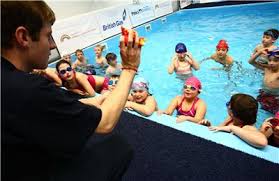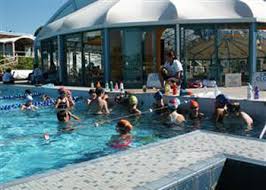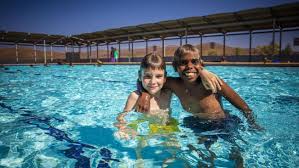Learning to swim is really a life-or-death situation. Because of the fact that 60% of children in Victoria, Australia cannot safely swim. The government agency responsible for decisions regarding education decided that students must learn how to swim prior to graduation. The Education and Emergency Services Minister understands the importance of knowing how to survive in the water. Which is why they want all children in Victoria, Australia to know how to swim, too.
Proving Kids Can Swim
 Children in this Australian state will need to prove they can swim 50 meters in order to earn their Victorian Water Safety Certificate. This certificate shows that the child has passed a handful of water safety tasks. Children who earn this certificate from the school swimming course have to prove they can use rescue skills. Plus they have to prove that they can properly survive using a sequence of abilities that they learn in their coursework. This course was selected because children will need to learn how to be safe in the water.
Children in this Australian state will need to prove they can swim 50 meters in order to earn their Victorian Water Safety Certificate. This certificate shows that the child has passed a handful of water safety tasks. Children who earn this certificate from the school swimming course have to prove they can use rescue skills. Plus they have to prove that they can properly survive using a sequence of abilities that they learn in their coursework. This course was selected because children will need to learn how to be safe in the water.
This life skill was neglected for too long and too many children were developing water safety skills. The Education and Emergency Services Minister decided to make swimming mandatory for safety purposes. One child dying from a lack of water safety skills is one child too many. The Education Minister understood the fact that swimming lessons are just as important as learning to read and write.
Despite the fact that students must take courses in school swimming. The students will not have to retake classes if they do not succeed. Each school has to set up their own lessons and courses for this new mandate. And, the local schools will decide what consequences happen for students who do not master the skills.
Prioritizing Funding for School Swimming Lessons
Unfortunately, those local schools are going to be given any additional funding for this added mandate. This makes it difficult for schools that do not have swimming pools to teach their students how to swim. Schools that do not have  pools will have to decide where they will teach the lessons. They can be taught off-site, which can result in extra fees for students and schools. To supplement the costs of implementing a school swimming program, the government has established a grant program for schools.
pools will have to decide where they will teach the lessons. They can be taught off-site, which can result in extra fees for students and schools. To supplement the costs of implementing a school swimming program, the government has established a grant program for schools.
Schools Implementing School Swimming Outside of Australia
Fortunately for children around the world, Victoria, Australia is not the first government to mandate school swimming lessons for children. Bangladesh is one of the most recent governments to do the same thing. In this small Asian nation, children have to learn to swim in a way that will prevent them from drowning. Schools all throughout the country taught their students to stay alive in the water.
 Schools in the United States have also been slowly focusing on water safety training for children. On the west coast of the US, two schools districts have begun requiring school swimming lessons for their students. Wenatche School Board in the State of Washington has been requiring all high school freshman to swim in their physical education courses. In California, San Castro Valley High School is doing the same. In the California school district, students who do not take the lessons fail their physical education class.
Schools in the United States have also been slowly focusing on water safety training for children. On the west coast of the US, two schools districts have begun requiring school swimming lessons for their students. Wenatche School Board in the State of Washington has been requiring all high school freshman to swim in their physical education courses. In California, San Castro Valley High School is doing the same. In the California school district, students who do not take the lessons fail their physical education class.
Why Adopt This Important Class?
The plans of these schools should be adopted by all schools all over the world. Water safety is a serious issue and too many children leave school without learning how to save themselves in the water. With the ever-decreasing budgets in US schools, the once mandatory school swimming lessons have been disappearing.
At one point in time, schools  taught all children in one grade (usually in the upper elementary grades) how to swim. Since most elementary schools in the US do not have indoor swimming pools, children were bused to the nearest school with a pool. With budget cuts, many schools have stopped using their pools and they have stopped with intra-school busing, too. This has left too many students vulnerable to the potential dangers of water.
taught all children in one grade (usually in the upper elementary grades) how to swim. Since most elementary schools in the US do not have indoor swimming pools, children were bused to the nearest school with a pool. With budget cuts, many schools have stopped using their pools and they have stopped with intra-school busing, too. This has left too many students vulnerable to the potential dangers of water.
